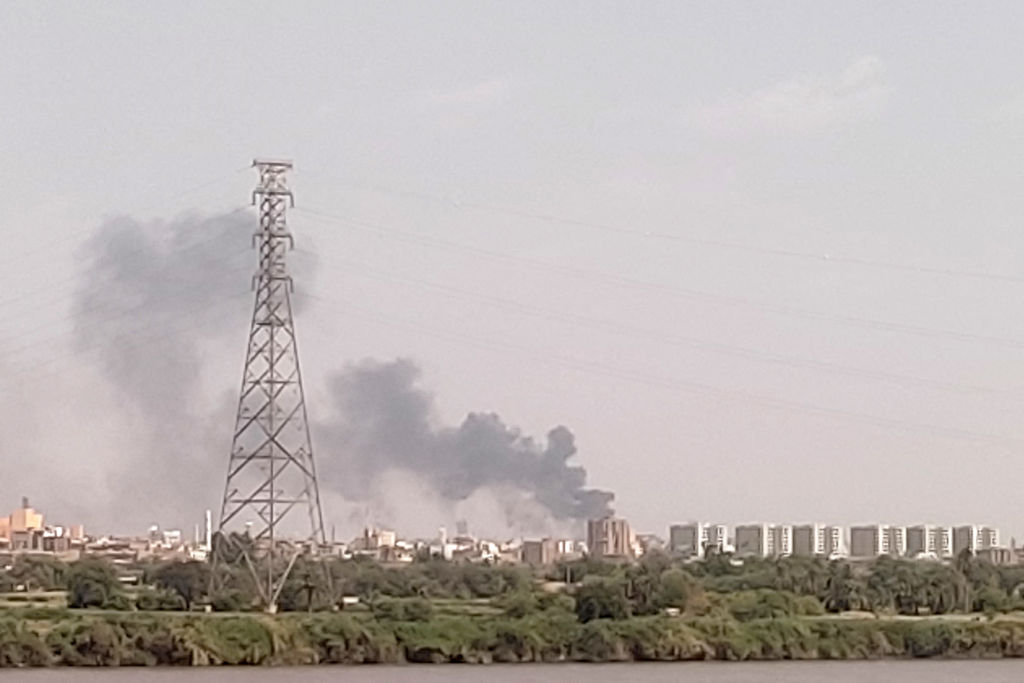ADF STAFF
Since January, Iranian cargo planes have been seen regularly at the airport in Port Sudan, the headquarters for Sudan’s ruling junta led by Sudanese Armed Forces (SAF) Gen. Abdel Fattah al-Burhan. Soon after those planes began arriving, the SAF launched attacks against the rival Rapid Support Forces (RSF) using Iranian-made Mohajer-6 drones.
In the meantime, the United Arab Emirates and Russia, via the mercenary organization Africa Corps, have supplied the RSF with weapons, fuel and other resources including quadcopter-style drones outfitted to carry and drop 120 mm mortar shells. The SAF has also used this technique.
Drones have become a key component of the war between the SAF and the RSF, in which two competing generals are fighting over control of the country’s natural resources. Many of those unmanned aerial vehicles are coming from Iran, Russia or the UAE as those countries throw their support behind Sudan’s opposing forces in hopes of securing their own benefits when the war ends.
While some drones are made in Sudan, the influx of drones from abroad violates a United Nations arms embargo on Sudan.
Much of the aid from Russia and the UAE has come through neighboring Chad and Libya. A United Nations report says the UAE supplied the RSF with aid disguised as humanitarian deliveries to displaced people sheltering in Chad.
Africa Corps, formerly known as the Wagner Group, has used its connections in Syria and eastern Libya to smuggle surface-to-air missiles and other weapons to the RSF. Meanwhile, Russia’s government is officially supporting the SAF as President Vladimir Putin seeks a Russian foothold along Sudan’s Red Sea coast.
The UAE, which seeks its own Red Sea outpost in Sudan, has supplied the same quadcopter drones to allies in conflict areas such as Ethiopia and Yemen, according to Brian Castner, a weapons expert at Amnesty International.
The RSF has used its drones to attack SAF positions, but also has used them to launch assaults on civilian institutions such as a hospital in Omdurman in 2023. The SAF also used drones early in the conflict against civilian sites, including a market frequented by RSF fighters where at least 40 people died during a SAF drone strike.
The arrival of Iranian drones helped the SAF to go on the offensive against the RSF and recapture the state broadcaster and surrounding parts of Omdurman, Sudan’s largest city, this year.
Since fighting broke out in April 2023, more than 15,000 people have died and millions more sent running for their lives. Experts believe those numbers are dramatically undercounted because so much of the country remains inaccessible to assessment teams.
Medical experts say children and pregnant women are dying from easily treatable diseases in North Darfur because attacks on hospitals have shuttered the region’s medical infrastructure.
Given the impact they have had on the conflict, drones flowing into Sudan are likely to keep the conflict going despite international calls for a negotiated resolution, according to experts. In May, the SAF refused to return to peace talks in Jeddah, Saudi Arabia.
“If the UAE withdraws its support and cuts ties with the RSF today, there’s an 80 per cent chance the war might end tomorrow,” Hamid Khalafallah, a Sudan expert and PhD researcher at the UK’s University of Manchester, told the Financial Times in January.

